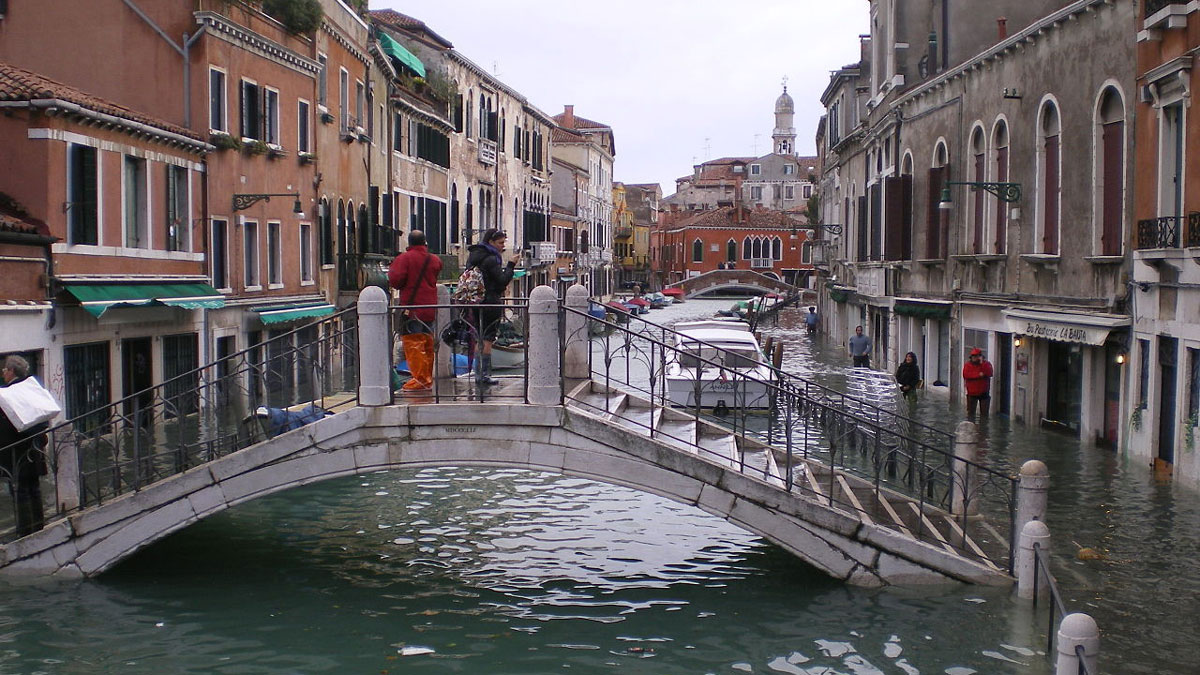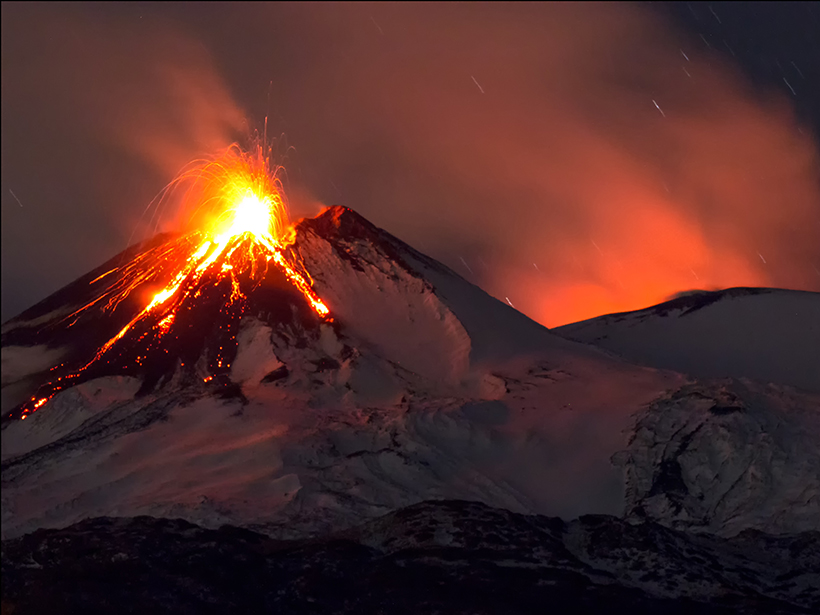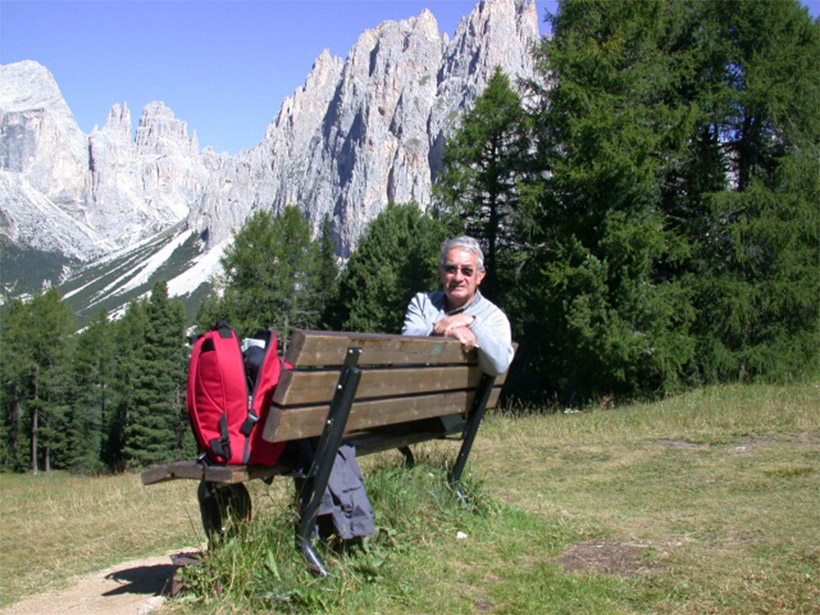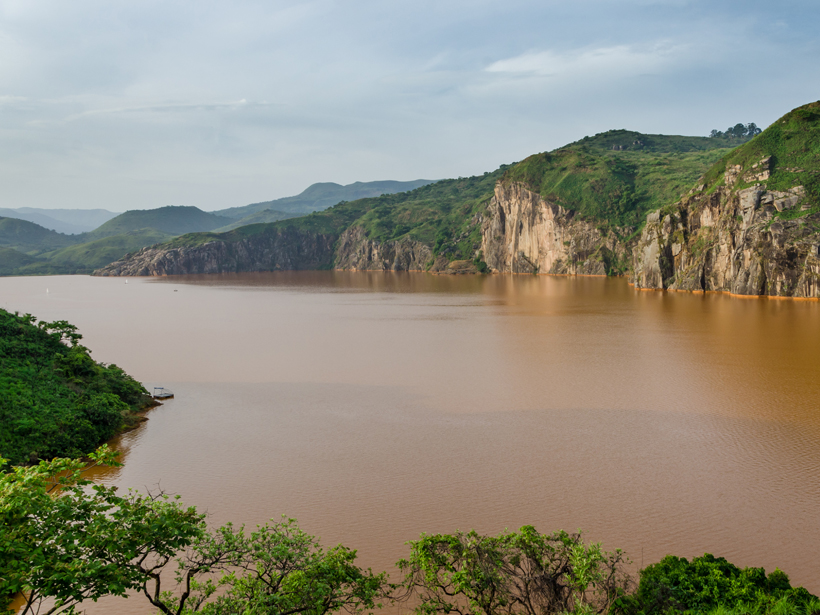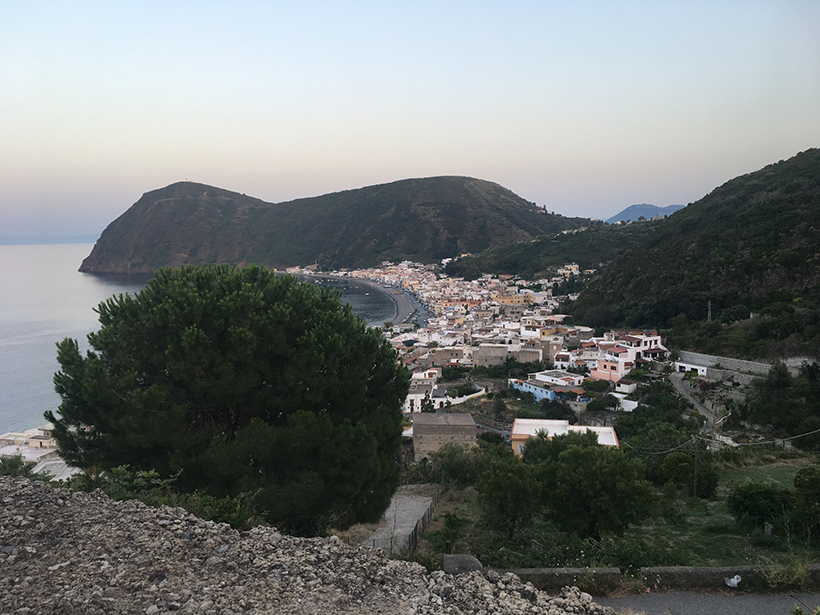Climate change increases massive storm surges, which may be more than Venice’s flood-control system can handle.
Italy
Etna Under Pressure: Does Gas Buildup Foreshadow Eruption?
Pressure from both magma and gas can trigger eruptions. Monitoring degassing can help predict eruptions but only if the magma system is well understood first.
Renato Funiciello, an Inspiration to Modern Geology in Italy
A special collection in Tectonics on geodynamics in the Mediterranean region celebrates the life and work of the renowned Italian geologist Renato Funiciello.
Radon Enrichment in the Volcanic Plume of Mount Etna
More than 70 passive sensors on Mount Etna have captured the first radon measurements in volcanic plumes and show that radon could affect people around volcanoes.
Climate Warming Improves Oxygen Mixing in a High-Altitude Lake
Long term weather and lake data from a high elevation lake in the Alps demonstrate that climate warming may actually improve the ability of high-altitude deep lakes to mix their waters.
Some Farm Animals Might Have a Sense About Impending Earthquakes
Stabled animals seem to grow fidgety in the hours before an earthquake, whereas their free-range counterparts show no discernible difference in behavior.
Ghostly Particles from the Sun Confirm Nuclear Fusion
Using the Borexino particle detector—located deep underground in Italy—researchers spot elusive neutrinos from the Sun’s CNO cycle.
Finding Faults in Our Past: Uncovering the Messina Earthquake
The source of the deadly 1908 Italian earthquake may finally be identified, thanks to a fresh look at the geomorphology of the Strait of Messina.
Lethal Volcanic Gases at an Italian Country Club
High levels of carbon dioxide and hydrogen sulfide emitted by volcanic outgassing caused a deadly accident near Rome, Italy, in 2011, geoscientists have shown.
Seismic Sensors Probe Lipari’s Underground Plumbing
An international team of scientists installed a novel, dense network of 48 seismic sensors on the island of Lipari to investigate the active magma system underground.

